Economic Letter
Economic Commentary July 2025
By Patrick Pascal
July 2025
U.S. ECONOMY
The unemployment rate has risen slightly over the past four months as both initial and continuing unemployment claims have increased. Payroll growth has slowed, particularly among middle-management. The U. S. consumer savings rate has returned to pre-2019 levels while loan delinquency rates are back to levels not seen since the contraction of 2008-2011.
On July 3, the Atlanta Fed raised its estimates for both second quarter real GDP growth (to 2.6%) and real personal consumption expenditures (to 1.6%). Capex spending was strong in Q1 and Q2—perhaps related to accelerating purchases ahead of tariffs.
The Bureau of Labor Statistics’ Consumer Price Index reached a four-year low of 2.3% in April, and rose slightly in May to 2.4%. The Fed’s Personal Consumption Expenditures (PCE) Index, fell from 2.9% in December to 2.7% in May—still well above the Fed’s long-held 2% goal. Goldman Sachs economists recently predicted core PCE inflation will shoot up more than 0.5% to 3.4% by December.
According to the NBER, residential investment is the one of the most forward-looking sectors of the U.S. economy—usually rising or falling some months before a recession officially ends or begins. Therefore, it is concerning that U.S. residential investment contracted by 1.3% in Q1 and is estimated to have shrunk by 4.4% in Q2 while new home inventories have surged to the highest level since late 2009. Today, new homeowners must allocate a larger portion of their income to servicing their mortgages than at the peak of the housing bubble in 2006. Both the Case-Shiller home price index and the FHFA index have also fallen in recent months.
The Conference Board Consumer Confidence Index® declined by 5.5% in the month of June. The Expectations Index—based on consumers’ short-term outlook fell similarly to 69.0. Readings below 80 typically signal recessions. 57% of respondents expected interest rates to rise, the highest share since October 2023.
The just passed 2025 Budget Act has the potential to mitigate the short-term drag from tariffs—as the spending cuts come into effect later, while the tax cuts begin immediately. The Act is estimated to raise the 2026 budget deficit by 0.9% of GDP and the Congressional Budget Office expects the federal debt-to-GDP ratio to climb from 98% today to 124% by 2034.
FIXED INCOME
It should not be a surprise that Chairman Powell and the Federal Reserve Board have kept the Fed Funds rate unchanged for over six months. Over this time, we have seen great uncertainty regarding global trade, U.S. Government fiscal policy and geopolitics resulting in large gyrations in bond currency and equity prices.
As unemployment nears the rate at which the Fed mandate towards full employment would suggest cuts, the dollar continues to decline (down between 8 & 14% YTD against our primary trade partners), leaving a difficult choice between stabilizing the dollar and keeping unemployment low. With the recent Budget Act requiring large debt issuances to cover our fiscal deficits, this quandary only becomes more challenging. That the Fed Funds rate was lowered by 100 basis points in 2024, but the 10-year U.S. Treasury yield rose approximately 115 basis points higher, well exemplifies this dilemma – that longer maturities may not move significantly lower as in the past.
At present, fixed income portfolios should continue to hold short to intermediate term durations with an eye towards lengthening when opportune.
EQUITIES
Today’s S&P 500 forward P/E multiple of 21.8 does not price in much recession risk. With leading indicators such as housing and consumer behavior recently weakening, the risks of a recession remain elevated. Lingering tariff uncertainty adds to this risk. At present, we see the potential for a short recession over the coming four quarters as about 50%.
Should a market related sell-off ensue, forward price earnings ratios could be expected to drop into the high teens while actual S&P 500 aggregate earnings could drop below $250. Such a scenario would take the S&P 500 Index to something south of 4500. Conversely continued earnings growth and P/E expansion could suggest an upside north of 6800 for the Index. A midpoint of these scenarios suggests a fair value of about 5600-5700 for the Index—about 9% below present valuations.
However, just as the recent rallies have been characterized by relatively narrow leadership, so too might any correction. Many companies continue to offer good values and could be expected to perform relatively well under both scenarios.
The opinions expressed are for general informational purposes only and are not intended to provide specific recommendations or advice on any specific security or investment product. It is only intended to provide education about investment issues.
